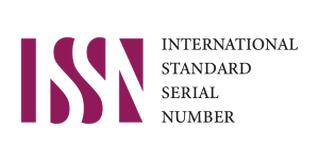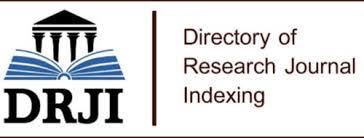Research Article
Antibiotic Use Practices Among Residents of Yenagoa Metropolis: A Cross-Sectional Survey
- Dr. Owonaro A Peter
Corresponding author: Dr. Owonaro A Peter
Volume: 1
Issue: 2
Article Information
Article Type : Research Article
Citation : Owonaro A Peter, Ibegi S Ibegi, Eniojukan F Joshua, Iyele Kamenebali, Olodiama, Providencia Chichi. Antibiotic Use Practices Among Residents of Yenagoa Metropolis: A Cross-Sectional Survey. Journal of Medical and Clinical Case Reports 1(2).https://doi.org/10.61615/JMCCR/2024/MAY027140507
Copyright: © 2024 Owonaro A Peter. This is an open-access article distributed under the terms of the Creative Commons Attribution License, which permits unrestricted use, distribution, and reproduction in any medium, provided the original author and source are credited.
DOI: https://doi.org/10.61615/JMCCR/2024/MAY027140507
Publication History
Received Date
22 Apr ,2024
Accepted Date
03 May ,2024
Published Date
07 May ,2024
Antibiotics have been subject to misuse, which is considered to be a key factor in the development of antibiotic-resistant pathogens, resulting in complications in patients. To understand the practices associated with antibiotic use and resistance in the Yenagoa metropolis, a descriptive cross-sectional survey was used to investigate the common practices relating to antibiotic use and resistance among 408 residents of randomly selected communities in the Yenagoa metropolis. A structured questionnaire was used to collect the field data, which was then analyzed using IBM SPSS version 27 and Microsoft Excel (version 2013). The results of this study showed that cough was reported as the most common condition for which respondents use antibiotics, and 25.7% of respondents reported that they always obtain antibiotics with a prescription, with pharmacy being the most common source from where they get their antibiotics. Also, 83.33% reported that they get information about antibiotics from a healthcare professional. It was recommended that the Pharmacy Council of Nigeria restrict Patent and Proprietary Medicine Vendors to only stock antibiotics as provided in the essential medicines list. Keywords: Antibiotics use; Antibiotics Resistance; Practice; Pharmacy; Nigeria; Survey.
►Antibiotic Use Practices Among Residents of Yenagoa Metropolis: A Cross-Sectional Survey
Owonaro A Peter1*, Ibegi S Ibegi1, Eniojukan F Joshua1, Iyele Kamenebali1, Olodiama1, Providencia Chichi1.
1Department of Clinical Pharmacy and Pharmacy Practice, Faculty of Pharmacy, Niger Delta University, Nigeria.
Introduction
Antibiotics are medicines that fight infections in humans and animals caused by bacteria by killing them or making it difficult for them to grow and reproduce. They are ineffective against viral infections and most other infections (22). In Nigeria, members of the public can get access to antibiotics from pharmacies and patent and proprietary medicine vendors (PPMVs) without a prescription (15). The cost of antibiotics resistance to the economy and health care system is significant due to the negative impact on patient or caregiver productivity due to longer hospital stays and the need for more expensive and intensive care (6). The emergence and spread of drug-resistant bacteria that have acquired new resistance mechanisms that create antibiotic resistance continue to threaten our ability to treat common infections; of particular concern is the rapid global spread of multi-drug-resistant bacteria that cause infections that cannot be treated with conventional antibiotics (16). The main causes of antibiotic resistance are the misuse and overuse of antibiotics. Other factors include lack of access to clean water, sanitation, and hygiene for people and animals; inadequate prevention and control of infections and diseases in health care facilities and on farms; Lack of access to quality and affordable medicines, vaccines, and diagnostics; lack of awareness and knowledge; and lack of law enforcement (20).
Aim of the Study
The main purpose of this study was to investigate the practices of residents of Yenagoa metropolis relating to antibiotic use and resistance.
Specific Objectives of the Study
- To know the common disease conditions for which people use antibiotics.
- To know the common source of antibiotics in the Yenagoa metropolis and understand how members of the public use antibiotics.
- What is the main source of information about antibiotics for residents of the Yenagoa metropolis?
Method
Study Site
Bayelsa state is located in the southern part of Nigeria; the capital city, Yenagoa, has spread to cover several sub-communities that form Yenagoa Metropolis.
Study Design.
A cross-sectional design was used in this study.
Study Population
From the data of Nigeria’s population census done in 2006, the population of Yenagoa Metropolis was given as 138,633. The majority of the residents here are civil servants, farmers, and artisans.
Sample size determination.
The sample size was calculated using the Taro Yamane formula.
N= 138,633/1+(138,633) (0.05) ^2= 399
n= 399
420 participants were sampled (Reason: Attrition).
Study Instrument
A structured questionnaire was used as the research tool to collect the field data. The questionnaire was adapted from previous studies (1) and modified to suit this research. The questionnaire had two sections. The instrument was certified after a pilot study before the formal distribution to the respondents in the study area. The pilot study was conducted on 25 respondents to check for the reliability of the tool.
Data Collection and Sampling
Data were collected using judgemental sampling techniques.
Data Analysis
IBM SPSS version 27 and Microsoft Excel, descriptive statistics such as frequency were used to present data and further express it in charts.
Sampling Technique: A simple random sampling was used.
Ethical Issues:
Ethical approval was obtained from the Bayelsa State Ministry of Health as well as the participants themselves. The study was explained to all participants and informed verbal consent was obtained before proceeding with the interview.
Inclusion and Exclusion Criteria
Inclusion Criteria: Participants included residents who were willing to participate.
Exclusion Criteria: Individuals younger than 18 years were exempted. Residents who participated in the pilot study were also exempted.
RESULTS
Demography of Respondents
Age of Respondents
From the results obtained, the age group 18-24 years had the highest number of respondents at 37.5%, followed by the age group 25-34 at 36%, 16% of respondents were from the age group 35-44, 5.9% of respondents were from age group 45-54, 2.2% of responses came from age group 55-64, while 1.7% of respondents came from geriatrics (65 years and above).
Gender of Respondents
From the results, 57.8% of the respondents were female, while 42.2% of the respondents were male.
Marital Status of Respondents
From the results obtained, Singles made up the highest proportion of respondents at 61.5%; respondents who were married were 31.9%, 4.4% of respondents were divorced, and 2.2% of respondents were widowed.
Education Level of Respondents
The results show that 62% of respondents were those who had attained a tertiary level of education, more so those whose highest level of education was the secondary level, formed 32.8% of respondents, while 5.1% of respondents had primary education.
Occupation of Respondents
The results revealed that those in business/trading were the highest respondents in the study at 34.3%, students made up 29.7% of respondents, civil servants were also among those sampled, forming 23.8% of respondents, 9.1% of respondents were unemployed, while retirees made up 3.2% of respondents.
Research Questions
Research Question One: What are the common disease conditions for which people use antibiotics?
The results obtained from the study showed that 79.7% of respondents had used antibiotics in the last six months, and the most common condition for which antibiotics were used was reported to be cough (31.13%); other common reasons for which respondents used antibiotics included cold, body pain, boils, catarrh, flu, and menstrual pains.
Figure 1: Reasons for Antibiotic Use

Figure 1. Less common disease conditions for which respondents use antibiotics included malaria (0.74%), headache (0.25%), hormonal imbalance (0.25%), knee pain (0.25%), prevention of sexually transmitted infections (0.25%), and vomiting (0.25%).
Research Question Two: Do people get their antibiotics from the right source, and do they take them as prescribed?
Figure 2: Sources of Antibiotics

Figure 2: The most common source from where people get their antibiotics was reported to be pharmacy (63.48%), followed by patent and proprietary medicine vendors (PPMVs), commonly called “chemists” in Nigeria (28.68%). 27% of respondents reported that they always complete the full course of antibiotics treatment even if they start feeling better.
Practices Relating to Antibiotic Use
As shown in Table 1, over 70% of respondents reported that they had used antibiotics in the last six months before this survey was conducted. 25.7% reported that they always use a prescription to obtain antibiotics. Only 27% of respondents reported that they always completed their antibiotic course of treatment. Over 50% of respondents reported that they sometimes share their antibiotics with others.
Table 1: Frequency Statistics on Practice Regarding Antibiotic Use
|
Variable |
Frequency |
Percent of Participants (%) |
|
Used antibiotics in the last 6 months |
|
|
|
Yes |
325 |
79.7 |
|
No |
83 |
20.3 |
|
Obtain antibiotics with a prescription |
|
|
|
Always |
105 |
25.7 |
|
Sometimes |
277 |
67.9 |
|
Never |
26 |
6.4 |
|
Complete the full course of antibiotics |
|
|
|
Always |
110 |
27.0 |
|
Sometimes |
272 |
66.7 |
|
Never |
26 |
6.4 |
|
Share antibiotics with others |
|
|
|
Always |
14 |
3.4 |
|
Sometimes |
210 |
51.5 |
|
Never |
184 |
45.1 |
Figure 3: Reasons for Sharing Antibiotics

Figure 3: Over 50% of respondents reported that they sometimes share their antibiotics with others, and the most common reason why they share was that they had similar symptoms (49.37%).
Research Question Three: What is the main source of information about antibiotics for residents of the Yenagoa metropolis?
Figure 4: Source of Information on Antibiotics

Figure 4 shows that healthcare professionals are the most common source of information about antibiotics for the respondents, as 83.33% of respondents reported that they obtain information from healthcare professionals. It also shows that respondents rarely obtain information from radio/television and printed materials, as confirmed in their percentage scores of 12.99% and 14.22%, respectively.
Discussions
This study investigated common practices related to antibiotic use and antibiotic resistance in the Yenagoa metropolis of Bayelsa State in Nigeria. The key findings are discussed below.
Reasons for Antibiotics Use
The most common conditions for which people used antibiotics were cough, cold, body pains, boils, catarrh, flu, and menstrual pain. According to public surveys conducted in Sudan (7), and Ethiopia (17), it was found that the most common conditions for which people self-medicate with antibiotics include acute respiratory tract symptoms, cough, common cold, wound infections, sore throat, aches and pains, tonsillitis, diarrhea, fever, and cold and flu. However, many of these ailments do not require antibiotic treatment, and the practice of non-prescription antibiotic use for their treatment is a global commonality (7).
It was reported that 6.4% of respondents never completed their antibiotics course once they started feeling better, which is lower than a study by (11). It was reported that 44.5% of the population stopped using antibiotics after the improvement of symptoms. The traditional advice to complete the full course of antibiotics, even after symptoms have resolved, has been a subject of debate in recent years. Some experts argue that in many situations, it is reasonable to stop antibiotic treatment once the patient’s symptoms have resolved, and doing so is not likely to lead to relapse or promote antibiotic resistance (12,3). However, there are still scenarios where stopping antibiotics upon resolution of symptoms is not appropriate, such as when eradication of the bacteria is the aim or in patients with more severe infections (3). It is, however, important to follow the advice of a healthcare professional regarding the appropriate duration of treatment based on the best clinical evidence. (23).
This study reports that of the respondents, 3.4% always and 51.5% sometimes share their antibiotics. It also showed that the most common reason why people share antibiotics was because they had similar symptoms (49.37%), followed by relatives (24.89%). This is lower than the findings from a study by (13), which showed that 70% of parents whose children had leftover antibiotics diverted the antibiotics for use in other people, with siblings being the most common recipients.
It is essential not to share your antibiotics with others as different infections can be caused by bacteria, and antibiotics may not be suitable for everyone due to allergies, other medicines, or underlying health conditions (4). Instead of sharing antibiotics, it is recommended to consult a healthcare professional for proper treatment and advice.
Source of Antibiotics
About 6.4 % of respondents reported that they never obtained antibiotics with a prescription; this is lower than a study, where it was reported that 31.6% of respondents who had self-medicated obtained antibiotics directly from private pharmacies without a prescription. Antibiotics should only be obtained with a prescription because using antibiotics without a prescription is potentially unsafe and may increase the risk of antimicrobial resistance. Obtaining antibiotics without a prescription can lead to the misuse of the drugs and increase the risk of antibiotic-resistant bacteria (8).
Pharmacy was reported as the main source of antibiotics (63.48%) for the respondents, followed by patent medicine vendors (28.68%), which is similar to the study by (25), reported that 93% of people obtained their most recently taken antibiotics from a pharmacy or medical store, highlighting the significant role of retail pharmacies as a source of antibiotics.
Source of Information about Antibiotics
This study found that the main source of information about antibiotics was healthcare professionals (83.33%), which is higher than a study by (17), which found that the major source of information about antibiotics was healthcare professionals (64%). People should source information about antibiotics from reliable sources such as healthcare professionals, official health websites, and reputable medical organizations. Some recommended sources of information about antibiotics include;
- Official health websites: Websites such as that of the WHO and National Health Department provide reliable information on antibiotics, including their uses, potential side effects, and guidance on when to use them (24).
- Healthcare professionals: Doctors, nurses, and pharmacists are valuable sources of information on antibiotics; they can guide the appropriate use of antibiotics, potential side effects, and the importance of completing the full course of treatment (18).
Radio can also be an ideal source of information on antibiotics, as it is a popular and accessible medium that can reach a wide audience. In a cross-sectional survey conducted in a rural district of Ha Nam Province, Vietnam, individuals who sought health information from radio sources had higher awareness of antibiotic resistance (19).
Family and friends can also be a source of information about antibiotics, as individuals often consult with their close relatives and friends when seeking advice on antibiotic use and expectations. A study evaluating knowledge, attitudes, and practices relating to the use of antibiotics found that 7.54% of the respondents mentioned family members or friends as a source of information on antibiotic use and resistance (21), which is lower than the findings from this study, 32.11%. It is, however, essential to note that the information provided by family and friends may not always be accurate or up to date. Healthcare professionals such as physicians, pharmacists, and nurses are more reliable sources of information on antibiotic use and antibiotic resistance. (14, 21).
Conclusion
This study revealed that the most common condition for which respondents use antibiotics is cough, and over a fourth of respondents reported that they always get their antibiotics with a prescription from a healthcare professional. Pharmacies were reported to be the most common source of antibiotics, while healthcare professionals were reported as the most common source of information about antibiotics. Also, it was ascertained that the practice of sharing antibiotics with others happens in the Yenagoa metropolis, with having similar symptoms being the most common reason why they share antibiotics.
Recommendations
- The government should sponsor sensitization campaigns to inform the public about the dangers of sharing their antibiotics with others.
- Government and/or Non-governmental organizations should carry out sensitization campaigns to educate the public on the importance of completing their antibiotics course of treatment as prescribed.
- The Pharmacy Council of Nigeria should restrict Patent and Proprietary Medicine Vendors to only stock antibiotics as provided in the essential medicines list.
Limitation/Sampling bias
As is common with most studies, the design of Studies one, two, and three were subject to limitations. The simple random sampling method used in this study had its own drawbacks, such as the high cost of obtaining the sample for a complete framework from all quarters and compounds in each of the communities. Another limitation was the reduction in the sampling size using a simple random method. Sampling technique—which has been reported in some studies to lead to bias or a one-sided. The findings of this study must be seen in the light of some limitations. A further limitation or weakness identified in the Study was financial constraints. Another limitation was the time available for the study, resulting in the use of this sampling technique (simple random sampling method or lottery sampling method) despite its advantages over other sampling techniques. There is a possibility of responder bias (such as demographic differences). However, during sampling, respondents were attended to according to their numerical ID, and the lottery approach reduced bias in recruitment. Regarding sampling bias, due to the simple random sampling techniques used to complete the self-report questionnaire, the respondents voluntarily presented themselves to participate.
Contribution to literature: This study's findings have contributed to an existing body of knowledge that cough and other minor reasons are implicated in antibiotic use in this part of the world.
Acknowledgment: The researchers appreciate the statistician, respondents, and co-researchers for the time.
Conflict of Interest: The researchers declare that there was no conflict of interest.
- Awad, A., & Aboud, E. (2015). Knowledge, attitude, and practice towards antibiotic use among the public in Kuwait. PLoS One, 10(2), e0117910.
- Bashaar, M, Thawani, V, Hassali, M, & Saleem, F. (2017). Disposal practices of unused and expired pharmaceuticals among the general public in Kabul. BMC Public Health, 17, 45.
- Borek, A, Edwards, G, Santillo, M, Wanat, M, Glogowska, M, Butler, C. Tonkin-Crine, S. (2023). Re-examining advice to complete antibiotic courses: a qualitative study with clinicians and patients. BJGP Open, 7(2).
- Centers for Disease Control and Prevention. (2021a). Antibiotic Prescribing and Use: Antibiotic Do's & Don, ts. Retrieved November 06, 2023,
- Centers for Disease Control and Prevention. (2021b). (2023)Antibiotic Prescribing and Use: Outpatient. Retrieved from https://www.cdc.gov/antibiotic-use/core elements/outpatient.html
- Dadgostar, P. (2019). Antimicrobial Resistance: Implications and Costs. Infection and drug resistance, 12, 3903-3910.
- Elmahi, O, Musa, R, Shareef, A, Omer, M., Elmahi, M, Altamih, R., Alsadig, T. (2022). Perception and practice of self-medication with antibiotics among medical students in Sudanese universities: A cross-sectional study. PloS One, 17(1), e0263067.
- Er Of Texas. (2023). Can I Get Antibiotics Over The Counter? Prescription Medication Rules. Retrieved, from https://www.eroftexas.com/can-i-get-antibiotics-over-the-counter/
- https://www.fda.gov/consumers/consumer-updates/where-and-how-dispose-unused-medicines#:~:text=Disposing%20medicines%20in%20household%20trash,drops%2C%20patches%2C%20and%20creams.
- FDA. (2022). Drug Disposal: Drug Take Back Locations. Retrieved, (2023), from https://www.fda.gov/drugs/disposal-unused-medicines-what-you-should-know/drug-disposal-drug-take-back-locations
- Jairoun, A, Hassan, N, Ali, A, Jairoun, O, Shahwan, M, & Hassali, M. (2019). University students’ knowledge, attitudes, and practice regarding antibiotic use and associated factors: a cross-sectional study in the United Arab Emirates. Int J Gen Med, 12, 235-246.
- Langford, B, & Morris, A. (2017). Is it time to stop counseling patients to “finish the course of antibiotics”? Can Pharm J (Ott), 150(6), 349-350.
- Milanaik R. (2018). Diversion of prescription antibiotics: Should you take from Peter to treat Paul? AAP National Conference & Exhibition, Orlando, Fla.
- Miyano, S, Htoon, T, Nozaki, I, Pe, E., & Tin, H. (2022). Public knowledge, practices, and awareness of antibiotics and antibiotic resistance in Myanmar: The first national mobile phone panel survey. PLOS ONE, 17(8), e0273380.
- Olanrewaju, O. P, Damilola, S. A., Adebowale, S. A, Opeyemi, F. O, Sodiq, I. Y. (2024). A national survey of antibiotic use, self-medication practices, and knowledge of antibiotic resistance among graduates of tertiary institutions in Nigeria. Scientific African, 23.
- Serra-Burriel, M, Keys, M, Campillo-Artero, C, Agodi, A, Barchitta, M, Gikas, A, López-Casasnovas, G. (2020). Impact of multi-drug resistant bacteria on economic and clinical outcomes of healthcare-associated infections in adults: Systematic review and meta-analysis. PloS one, 15(1), e0227139.
- Simegn, W, Moges, G. (2022a,). Antibiotics Self-Medication Practice and Associated Factors Among Residents in Dessie City, Northeast Ethiopia: Community-Based Cross-Sectional Study. Patient Prefer Adherence, 16, 2159-2170.
- Simegn, W., & Moges, G. (2022b). Awareness and knowledge of antimicrobial resistance and factors associated with knowledge among adults in Dessie City, Northeast Ethiopia: Community-based cross-sectional study. PLoS One, 17(12), e0279342.
- Ulaya, G, Nguyen, T, Vu, B, Dang, D, Nguyen, H, Tran, H, Lewycka, S. (2022). Awareness of Antibiotics and Antibiotic Resistance in a Rural District of Ha Nam Province, Vietnam: A Cross-Sectional Survey. Antibiotics, 11(12), 1751.
- Ventola, C. L. (2015). The antibiotic resistance crisis: part 1: causes and threats. P & T: a peer-reviewed journal for formulary management, 40(4), 277-283.
- Voidăzan, S, Moldovan, G, Voidăzan, L, Zazgyva, A, & Moldovan, H. (2019). Knowledge, Attitudes, And Practices Regarding The Use Of Antibiotics. Study On The General Population Of Mureş County, Romania. Infect Drug Resist, 12, 3385-3396.
- WebMD Editorial Contributors. (2023) What Are Antibiotics? (S. Felson, Ed.)
- Wise, R, Hart, T, Cars, O, Streulens, M., Helmuth, R., Huovinen, P, & Sprenger, M. (1998). Antimicrobial resistance is a major threat to public health. BMJ, 317(7159), 609-610.
- World Health Organization. (2023) Urban Health. from https://www.who.int/news-room/fact-sheets/detail/urban-health
- Zhang, T, Lambert, H, Zhao, L, Liu, R., Shen, X, Wang, D, & Cabral, C. (2022). Antibiotic Stewardship in Retail Pharmacies and the Access-Excess Challenge in China: A Policy Review. Antibiotics, 11(2), 141.
Download Provisional PDF Here
PDF




p (1).png)




.png)




.png)
